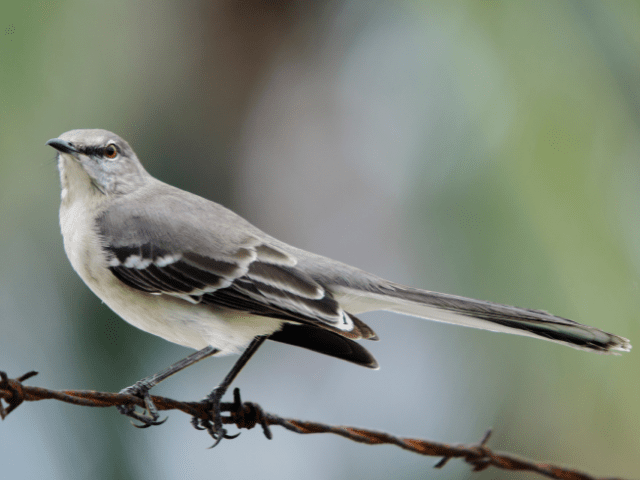The northern mockingbird (photo above) is the state bird of Texas, as pretty much everyone knows, but what other species do they have to offer?
Well…
It turns out the state of Texas has numerous backyard birds that will amaze the birder out of you! From the plumage, the size, the vocalization, up to their behaviors, it’s all so majestic.
We have compiled fifteen of the most amazing birds and written down everything about them you may want to know.
Keep scrolling and get to know each bird you can expect to see while birding in the backyards of Texas!
The 15 Species Of Backyard Birds In TX
1. Northern Cardinal (Cardinalis Cardinalis)
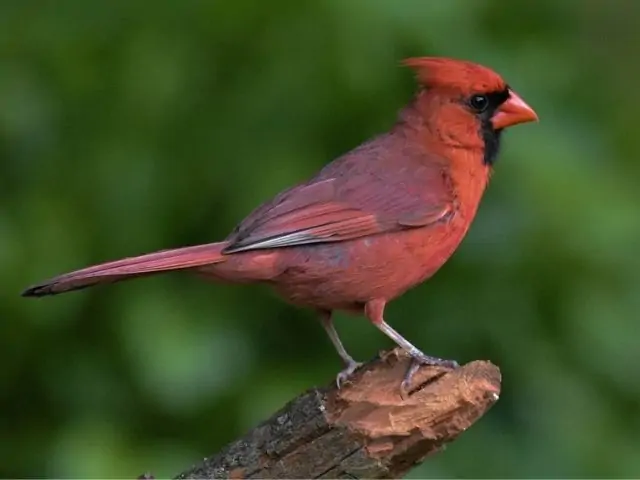
If you’ve ever played the game Angry Birds before, you must find this Texas red bird terribly familiar (lol).
With their vibrant red plumage and unmistakably eye-catching cone-shaped beak, there’s almost no forgetting them.
Northern Cardinals are not only one of the most common species in Texas, but the most popular too! They are an all-year-round resident in the eastern half of the United States.
These are just the same size as Red-winged Blackbirds, and if you don’t know that species, then you can compare them to American Robins, only a tad bit smaller.
Differentiating their sexuality isn’t as tough as it gets for other species, although both sexes share the same plump body, long and full tail, and heavy bill, male birds have a splash of black on their faces, while female birds have gray.
With such a big, heavy, and thick bill, you’d definitely wonder if they have a hard time eating.
Actually...
They love seeds, especially black oil sunflower seeds, they’ll spit out the hulls of the seeds like a nutcracker :>
2. Mourning Dove (Zenaida Macroura)
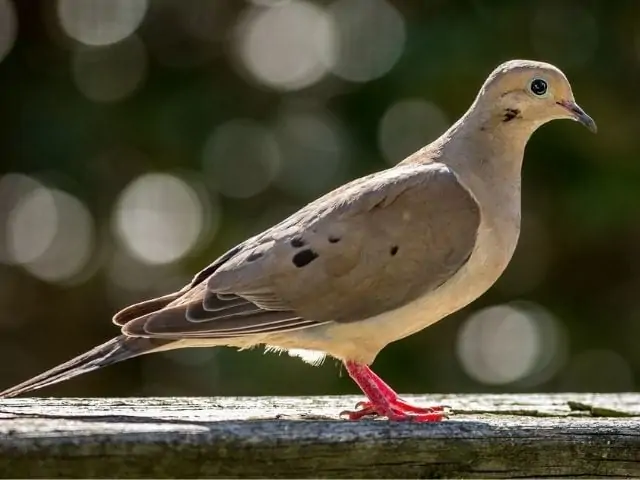
These birds will surely catch your heart with their simplicity and warmth.
Mourning Doves are almost everywhere in Texas! They’re around all year long.
Their plump pale brown-pink bodies and tiny slender bills are really just the perfect combinations! Long and pointed tails, stubby legs, and dark wings aren’t they just the cutest?
Pigeons aren’t the only birds you’ll be seeing on semi-open urban areas, wires, and fences, the mourning doves love those areas too.
In comparison with a city pigeon, a mourning dove is a little bit smaller.
Do they eat seeds? ALMOST EXCLUSIVELY. Try putting a bunch in your feeders and they’ll surely love you!
3. White Winged Dove (Zenaida Asiatica)
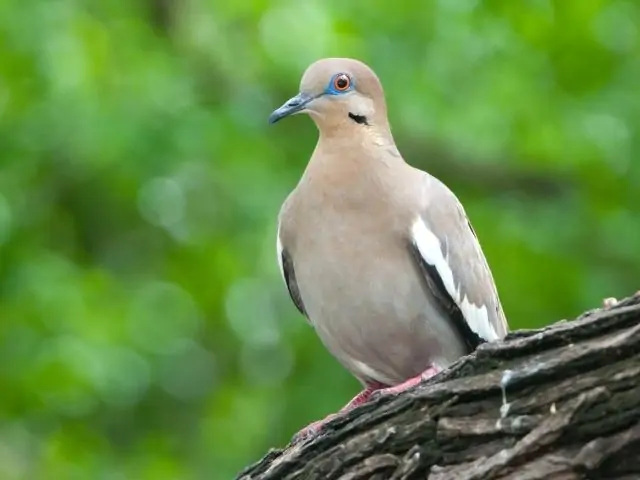
This desert dove can only be found in Texas during Summer, so don’t miss your chance!
Placing them beside Mourning doves, you can definitely notice that they tend to be bigger in size, and their necks are much more muscular.
White Winged doves are mostly brown and their grayish-white wings are ever visible. Their square-shaped tails are the center of attention with their broad white top and black undercolor.
Unlike other doves, you won't find this one on the streets! They’re mostly in deserts and small towns in the west.
Seeds, grain, the fruit of cacti, you name it. As long as you feed them on platforms or bird feeders, they’re not a big fan of the ground.
4. House Sparrow (Passer Domesticus)
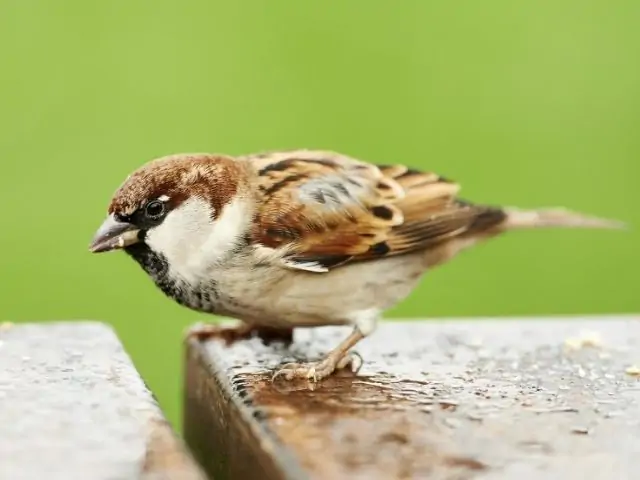
Ah, the common sparrow, Texas would definitely be so different without them.
The house sparrows are widely prominent in cities and farmlands, some even consider these as pests due to their ever-growing population.
They’re just the same size as house finches, but so much chunkier!
Their large head, puffy chest, short neck, medium tail, and short legs really just complete the adorable package.
Both genders share the same conical short bill, however, males have a black mask over their face, while females don't.
They can also be quite messy so using hopper or tray feeders won’t really work. Grain, seeds, and insects are their favorites!
5. Blue Jay (Cyanocitta Cristata)
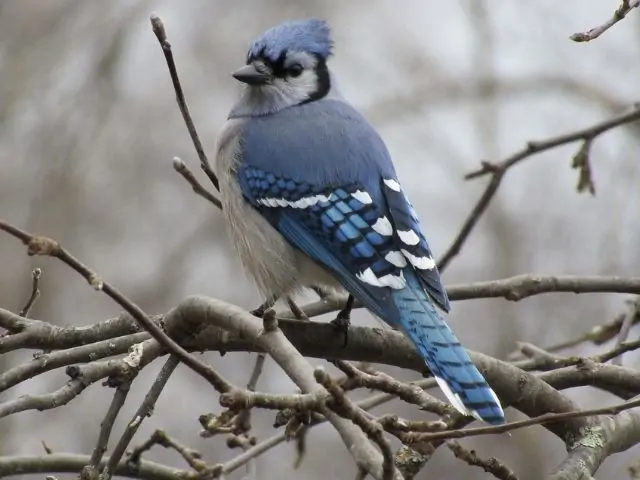
Just like the Northern Cardinal, the Blue Jay species get their popularity front heir bright vibrant blue plumage that is just unbeatable.
They are year-round residents of Texas, but when wintertime comes, they tend to gather near the Mexican border and the southwestern Gulf Coast.
They’ve got a fluffy large crested head and an ample tail that matches their long black bill. Their legs are strong and their wings are fast.
When feeding a Blue Jay, it's best to have intervals. These birds tend to gulp lots of seeds and store them in their crop, emptying your seed feeders faster than you could imagine.
6. Carolina Chickadee (Poecile Carolinensis)
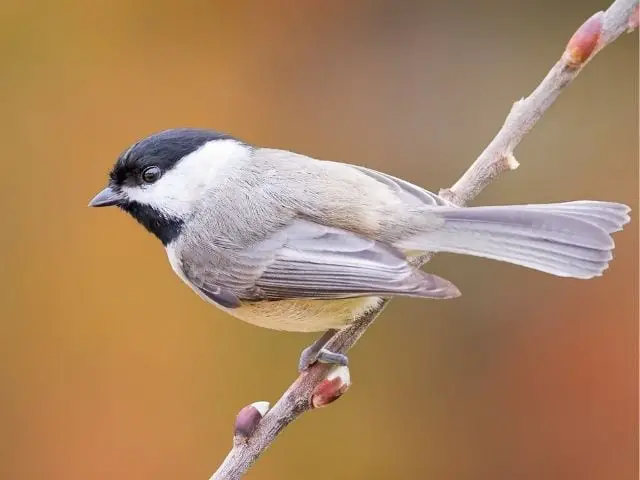
This fluffy little Chickadee is common all throughout and all year in eastern parts of Texas.
The Carolina Chickadee is just as tiny as an American Goldfinch. Its body and head are both round and its tail is long.
Their iconic patch plumage is what makes them so much more adorable. They’ve got a black-white-black mask and a gray body with a white rump.
Carolina Chickadees love lower elevated forests and wooded areas, which is why their diet mostly consists of insects, seeds in feeders are kind of off the table.
7. Eastern Phoebe (Sayornis Phoebe)
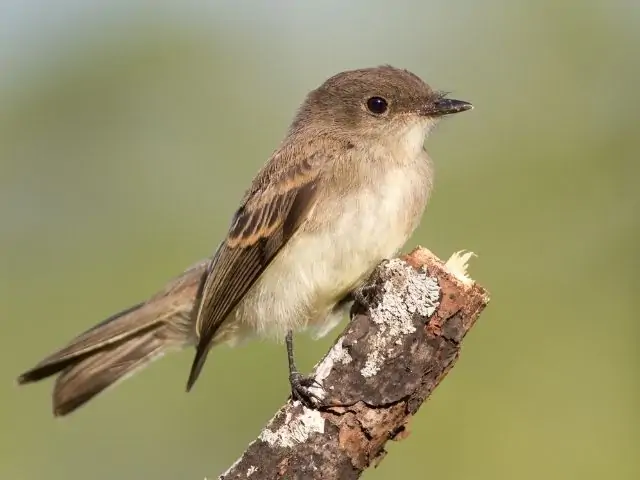
The eastern phoebe is one of the most lowkey bird species. They’re common, plain, and practically look like a lot of other birds.
They are year-round residents that only appear in certain areas of Texas during wintertime.
The biggest difference they have compared to house sparrows is that they're much larger. These birds are stout with long wings and a flat pointed bill.
They’ve got a brownish-gray plumage with white undertail coverts. You can differentiate them from other flycatchers by paying attention to their eyes, there are no rings.
You can find Eastern Phoebes on woodlands, suburbs, farms, and underneath eaves. They prefer to snack on flying insects rather than seed feeders.
8. Yellow Rumped Warbler (Setophaga Coronata)
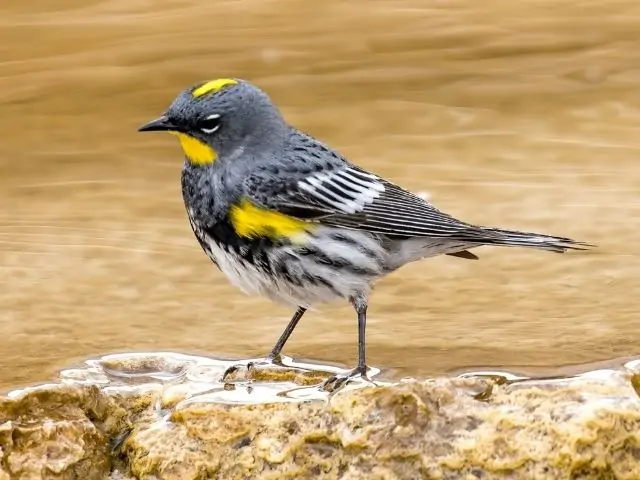
The Yellow-Rumped Warbler is a winter visitor throughout Texas, they are very abundant in treetops and weedy locations.
These birds breed in coniferous forests and mountains across Canada and Alaska.
Aside from the fact that they’re small, plump, and adorable, these birds also have a very short but pointed tail and bill.
Their feathers blend a blue-gray tone in the upper areas and yellow rumps and sides. Some of these birds have a yellow throat and a large wing patch, some of them are colored gray and pale cream only.
Yellow Rumped Warblers have a special interest in suet feeders 🙂
9. House Finch (Haemorhous Mexicanus)
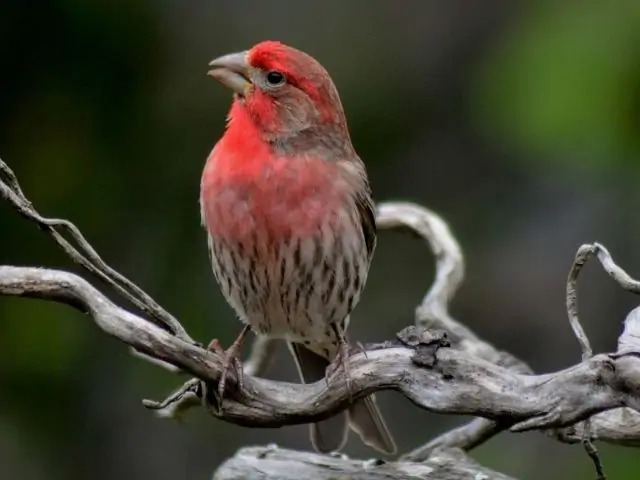
Out of all the red finches, the House finch is the most common in Texas, they are also the ones you’d most likely see in residential places.
House finches are very popular, which is exactly why they’re often used as a size comparison for other species.
Measuring from the bill to the tail, they are about 6 inches long which is significantly larger than goldfinches and chickadees.
They have a medium-notched tail and a short conical bill. Their plumage pretty much consists of brown and gray streaks and pale underparts.
You can find tiny flocks of house finches on wires, bushes, and trees. They reside in deserts and grasslands, but rural areas and towns have them too.
10. Red-Bellied Woodpecker (Melanerpes Carolinus)
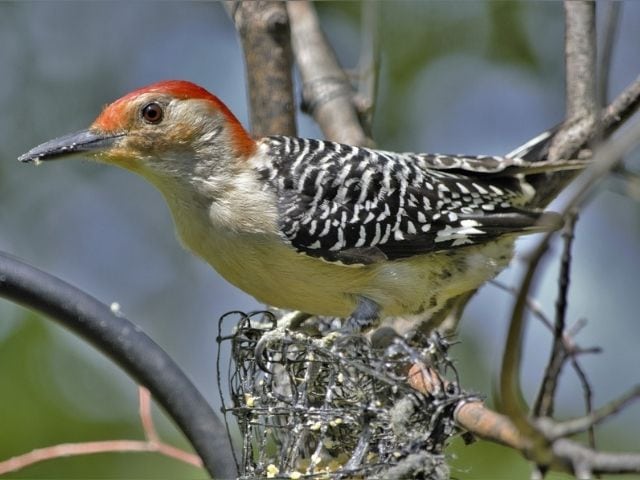
A Red Bellied woodpecker is unmistakable with its vibrant plumage and long bills. These year-round residents are fairly large for a backyard bird, which is exactly why they’re easy to spot.
These birds have a pale gray body, black and white striped back and wings, and a red nape, which really makes you question why they were called red-bellied woodpeckers.
They prefer insects and nuts. Tray feeders and suet feeder blocks are also some of the things a woodpecker is very attracted to.
11. Downy Woodpecker (Dryobates Pubescens)
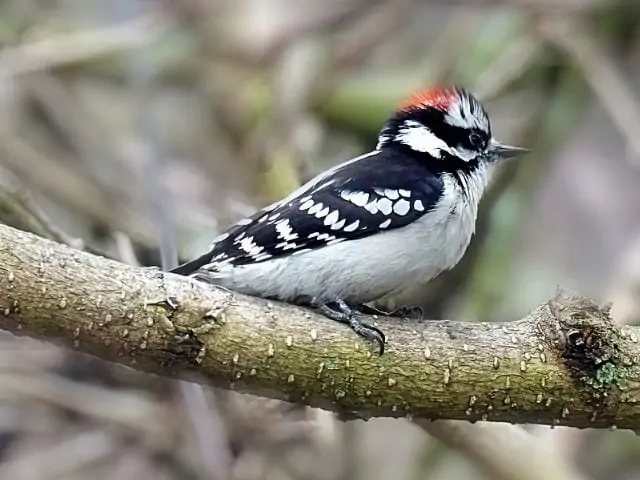
The Downy woodpecker is the tiniest of all woodpecker species!
They are residents of the northeastern half of Texas, for all seasons.
These birds have a large head, stocky body, and a short tail. Their bills are smaller and shorter compared to common woodpecker bills.
Their plumage consists of a black and white spotted back and wings, their head has black and white stripes as well.
The best way to identify them is through their red spot on the back of their head, it's almost unmistakable that it would be a downy woodpecker.
They can be found in small trees, weed stocks, and willows; mainly woody places near bodies of water. Males are more commonly found perched in smaller plants and twigs while the females are on trees.
When it comes to a woodpecker's preference, insects, fruits, seeds on feeders, arthropods, and suet bars are all in!
12. Painted Bunting (Passerina Ciris)
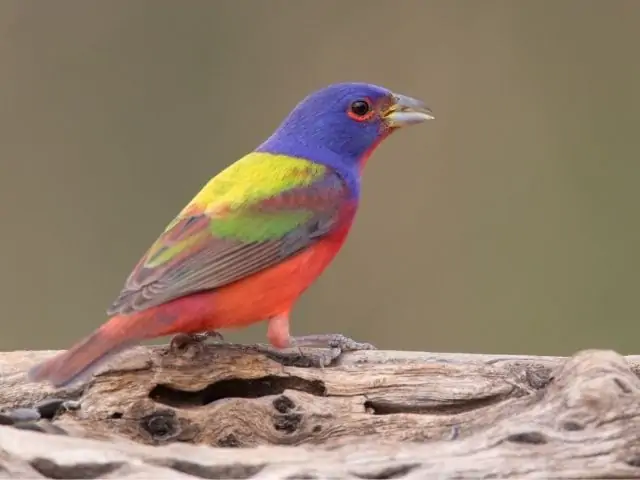
Your eyes are not fooling you!
Painted buntings are more commonly spotted in Texas during summertime.
They are larger than an American goldfinch but smaller than a house sparrow, but their exact measurements, of course, vary.
Their chunky bodies are matched with their round heads and short notched tails. Their bulls are short and triangular, but heavy.
The plumages of painted buntings consist of a splash of vivid colors like yellow, green, blue, and red, it all depends on the sex.
Their favorite spots are grassy fields, bushy roads, dense thickets, and pretty much any place that is old, unpopulated, and full of greens.
They eat seeds and ground plants throughout the year. Sometimes they switch their diet to insects when the breeding season is nearing.
13. Barn Swallow (Hirundo Rustica)
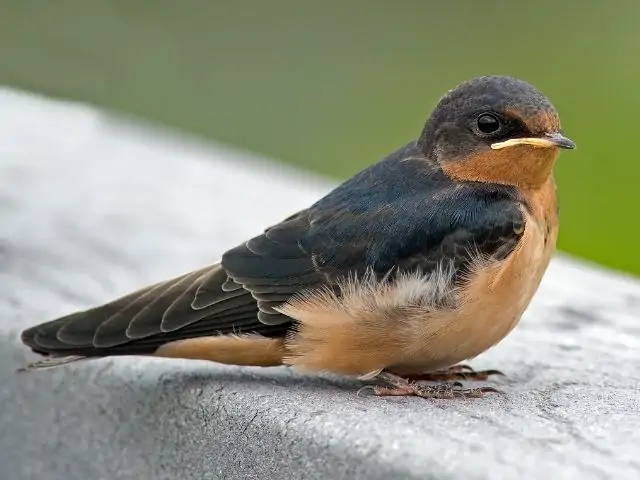
Unlike the Northern Mockingbird which is an exclusive Texas bird, the Barn Swallow species is widely abundant throughout the globe. They are only summer residents in Texas.
They're pretty much just the size of a house finch, the only difference would be the tail, their's is significantly longer.
A glossy dark purple and blue plumage covers their bodies along with a pinkish-orange rump.
14. Tufted Titmouse (Baeolophus Bicolor)
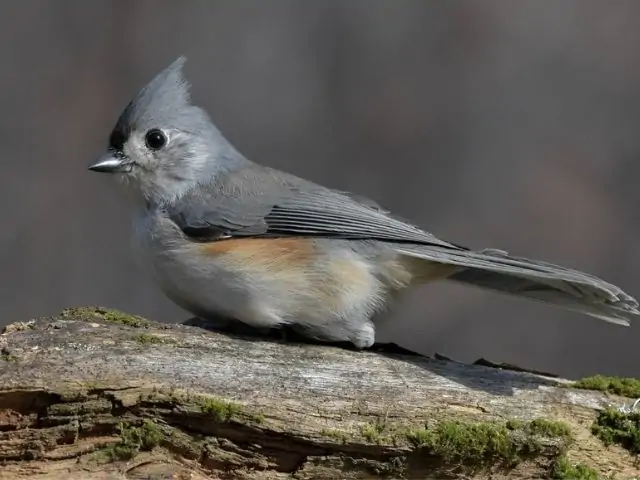
The Tufted Titmouse is a common species in eastern Texas, especially in areas covered by establishments, trees, or anything else; they're not a big fan of open areas. They travel and forage for food in groups or along with their families.
These birds have an iconic black spot on their foreheads and a gray head crest. Their long tails and tiny feet fit their posture very well.
The Tufted Titmouse species love black oil sunflower seeds, suet blocks, nuts, and basically anything you put in feeders.
Also, since they don't like open areas, if you position your bird feeder out in the open, chances are they'll swoop in, snack on it, then immediately run back to a covered area.
Adorable aren't they?
15. Great Tailed Grackle (Quiscalus Mexicanus)
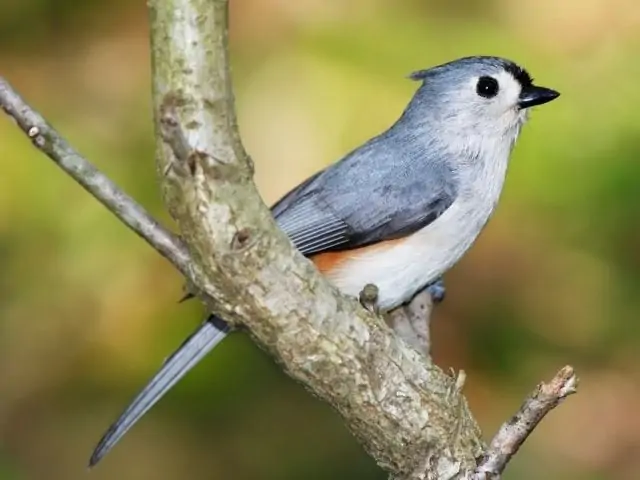
The Great Tailed Grackle is a medium-sized passerine bird.
Named after its long tail, the great-tailed grackle has a plumage mixture of deep blue, purple, and shiny black, which makes it look like a starry galaxy, marvelous.
When differentiating the male and female birds, you can make use of their plumage. The prominent colors seen on a female bird would be a dull black-brown, while male birds seem to have a blue tint in their feathers.
These birds fly and search for food in flocks and avoid separation as much as they could. You can often find them perched on tree branches and on the ground.
In terms of diet, they eat a wide variety; from small lizards, bird eggs, parasites, insects, to fruits, plants, and seeds. They also love bird feeders, and birdbaths, make sure to set one up when you arrive!
Frequently Asked Questions
What bird is only found in Texas?
The Northern Mockingbird. This is also another reason why they are considered the state bird. There may be instances where you spot a Northern Mockingbird outside of Texas due to some reasons, what’s important is for you to know that they shouldn’t be there! Certain conditions and habitats help them live and thrive, which is why it's crucial to keep them where they belong.
What is the rarest bird in Texas?
These would have to be the Whooping cranes. Not only are they the rarest bird species in Texas, but also the tallest of them all. They can be spotted returning to Texas to migrate through the state. If you ever spot one, then consider yourself lucky!
What is the best way to identify a bird I saw in my backyard?
The act of identifying backyard birds isn’t focused solely on their plumage and appearance. While colors, marks, and sizes may help greatly, it is crucial to also pay attention to their behavior, vocalization, and location. It's all about the balance and observance you have while birding. You can use a field guide, an app, or if you’re in Texas, the info above!
Take a look at these iconic birds in Texas to identify them easily:
To Wrap It Up
Birds never really fail to surprise us with their beauty, songs, and uniqueness.
As you go on your way foraging and watching these little birds in their day-to-day lives, it is essential to keep in mind that they too deserve peace and respect.
As cuddly and adorable they may seem some birds are easily frightened, alarmed, and threatened when approached, and some of them just aren’t the clingy type.
Always consider the safety of the birds and yourself as you enjoy your birding trip.

